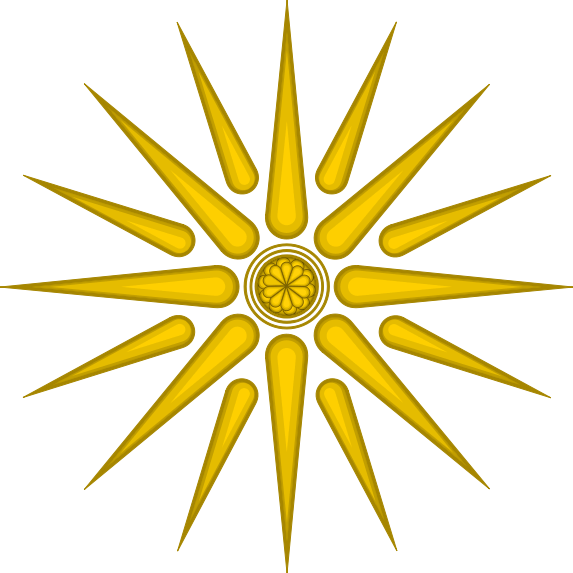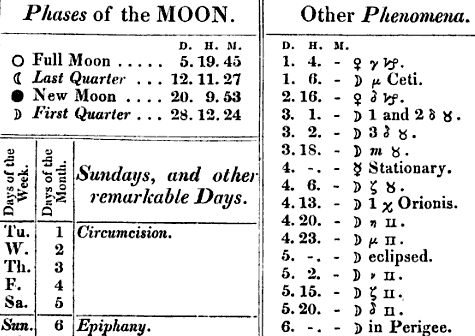|
Solar Symbol
A solar symbol is a symbol representing the Sun. Common solar symbols include circles (with or without rays), crosses, and spirals. In religious iconography, personifications of the Sun or solar attributes are often indicated by means of a halo or a radiate crown. When the systematic study of comparative mythology first became popular in the 19th century, scholarly opinion tended to over-interpret historical myths and iconography in terms of "solar symbolism". This was especially the case with Max Müller and his followers beginning in the 1860s in the context of Indo-European studies. Many "solar symbols" claimed in the 19th century, such as the swastika, triskele, Sun cross, etc. have tended to be interpreted more conservatively in scholarship since the later 20th century. Solar disk The basic element of most solar symbols is the circular solar disk. The disk can be modified in various ways, notably by adding rays (found in the Bronze Age in Egyptian depictions of ... [...More Info...] [...Related Items...] OR: [Wikipedia] [Google] [Baidu] |
Egyptian Hieroglyphs
Egyptian hieroglyphs (, ) were the formal writing system used in Ancient Egypt, used for writing the Egyptian language. Hieroglyphs combined logographic, syllabic and alphabetic elements, with some 1,000 distinct characters.There were about 1,000 graphemes in the Old Kingdom period, reduced to around 750 to 850 in the classical language of the Middle Kingdom, but inflated to the order of some 5,000 signs in the Ptolemaic period. Antonio Loprieno, ''Ancient Egyptian: A Linguistic Introduction'' (Cambridge: Cambridge UP, 1995), p. 12. Cursive hieroglyphs were used for religious literature on papyrus and wood. The later hieratic and demotic Egyptian scripts were derived from hieroglyphic writing, as was the Proto-Sinaitic script that later evolved into the Phoenician alphabet. Through the Phoenician alphabet's major child systems (the Greek and Aramaic scripts), the Egyptian hieroglyphic script is ancestral to the majority of scripts in modern use, most prominently the Latin ... [...More Info...] [...Related Items...] OR: [Wikipedia] [Google] [Baidu] |
Vergina Sun
The Vergina Sun ( el, Ήλιος της Βεργίνας, Ilios tis Vergínas, Sun of Vergina), also known as the Star of Vergina, Vergina Star or Argead Star, is a rayed solar symbol first appearing in ancient Greek art of the period between the 6th and 2nd centuries BC. The Vergina Sun proper has sixteen triangular rays, while comparable symbols of the same period variously have sixteen, twelve, eight or (rarely) six rays. The name "Vergina Sun" became widely used after the archaeological excavations in and around the small town of Vergina, in northern Greece, during the late 1970s. In older references, the name "Argead Star" or "Star of the Argeadai" is used for the Sun as the possible royal symbol of the Argead dynasty of the ancient kingdom of Macedonia. There it was depicted on a golden larnax found in a 4th-century BC royal tomb belonging to either Philip II or Philip III of Macedon, the father and half-brother of Alexander the Great, respectively. Tentatively inte ... [...More Info...] [...Related Items...] OR: [Wikipedia] [Google] [Baidu] |
Shamash
Utu (dUD " Sun"), also known under the Akkadian name Shamash, ''šmš'', syc, ܫܡܫܐ ''šemša'', he, שֶׁמֶשׁ ''šemeš'', ar, شمس ''šams'', Ashurian Aramaic: 𐣴𐣬𐣴 ''š'meš(ā)'' was the ancient Mesopotamian sun god. He was believed to see everything that happened in the world every day, and was therefore responsible for justice and protection of travelers. As a divine judge, he could be associated with the underworld. Additionally, he could serve as the god of divination, typically alongside the weather god Adad. While he was universally regarded as one of the primary gods, he was particularly venerated in Sippar and Larsa. The moon god Nanna (Sin) and his wife Ningal were regarded as his parents, while his twin sister was Inanna (Ishtar). Occasionally other goddesses, such as Manzat and Pinikir, could be regarded as his sisters too. The dawn goddess Aya (Sherida) was his wife, and multiple texts describe their daily reunions taking place ... [...More Info...] [...Related Items...] OR: [Wikipedia] [Google] [Baidu] |
Astronomical Symbol
Astronomical symbols are abstract pictorial symbols used to represent astronomical objects, theoretical constructs and observational events in European astronomy. The earliest forms of these symbols appear in Greek papyrus texts of late antiquity. The Byzantine codices in which many Greek papyrus texts were preserved continued and extended the inventory of astronomical symbols. New symbols have been invented to represent many planets and minor planets discovered in the 18th to the 21st centuries. These symbols were once commonly used by professional astronomers, amateur astronomers, alchemists, and astrologers. While they are still commonly used in almanacs and astrological publications, their occurrence in published research and texts on astronomy is relatively infrequent, with some exceptions such as the Sun and Earth symbols appearing in astronomical constants, and certain zodiacal signs used to represent the solstices and equinoxes. Unicode has encoded many ... [...More Info...] [...Related Items...] OR: [Wikipedia] [Google] [Baidu] |
Kamateros
The Kamateros family ( el, Καματηρός, pl. ''Kamateroi'' el, Καματηροί; Latinized respectively Camaterus, Camateri), was a Byzantine family of functionaries from Constantinople that became prominent in the 10th–12th centuries. Several family members were scholars and literary patrons. The feminine form of the name is Kamatera ( el, Καματηρά). The first attested member of the family is the '' spatharokandidatos'' Petronas Kamateros, who in supervised the construction of the Sarkel fortress for the Khazars and later became governor of Cherson. Several members of the family are attested in the 10th and 11th centuries as fiscal or judicial officials, and Gregory Kamateros became '' protasekretis'' and later ''logothetes ton sekreton'' to Emperor Alexios I Komnenos (). The family reached its peak in the 12th century, under Manuel I Komnenos () and the Angelos emperors. John Kamateros enjoyed the favour of Manuel I and was '' logothetes tou dromou'' i ... [...More Info...] [...Related Items...] OR: [Wikipedia] [Google] [Baidu] |
Old Symbol For Sun
Old or OLD may refer to: Places *Old, Baranya, Hungary *Old, Northamptonshire, England * Old Street station, a railway and tube station in London (station code OLD) *OLD, IATA code for Old Town Municipal Airport and Seaplane Base, Old Town, Maine, United States People * Old (surname) Music * OLD (band), a grindcore/industrial metal group * ''Old'' (Danny Brown album), a 2013 album by Danny Brown * ''Old'' (Starflyer 59 album), a 2003 album by Starflyer 59 * "Old" (song), a 1995 song by Machine Head *''Old LP'', a 2019 album by That Dog Other uses * ''Old'' (film), a 2021 American thriller film *''Oxford Latin Dictionary'' *Online dating *Over-Locknut Distance (or Dimension), a measurement of a bicycle wheel and frame *Old age See also *List of people known as the Old The Old is an epithet that may refer to: * Basarab the Old, Prince of Wallachia in the 1470s * Emund the Old (died 1060), King of Sweden * Gorm the Old (died 958), first historically recognized king of De ... [...More Info...] [...Related Items...] OR: [Wikipedia] [Google] [Baidu] |
Sun Symbol (late Classical And Medieval Mss)
A solar symbol is a symbol representing the Sun. Common solar symbols include circles (with or without rays), crosses, and spirals. In religious iconography, personifications of the Sun or solar attributes are often indicated by means of a halo or a radiate crown. When the systematic study of comparative mythology first became popular in the 19th century, scholarly opinion tended to over-interpret historical myths and iconography in terms of "solar symbolism". This was especially the case with Max Müller and his followers beginning in the 1860s in the context of Indo-European studies. Many "solar symbols" claimed in the 19th century, such as the swastika, triskele, Sun cross, etc. have tended to be interpreted more conservatively in scholarship since the later 20th century. Solar disk The basic element of most solar symbols is the circular solar disk. The disk can be modified in various ways, notably by adding rays (found in the Bronze Age in Egyptian depictions of A ... [...More Info...] [...Related Items...] OR: [Wikipedia] [Google] [Baidu] |
Oracle Bone Script
Oracle bone script () is an ancient form of Chinese characters that were engraved on oracle bonesanimal bones or turtle plastrons used in pyromantic divination. Oracle bone script was used in the late 2nd millennium BC, and is the earliest known form of Chinese writing. The vast majority of oracle bone inscriptions, of which about 150,000 pieces have been discovered, were found at the Yinxu site located in Xiaotun Village, Anyang, Henan Province. The latest significant discovery is the Huayuanzhuang storage of 1,608 pieces, 579 of which were inscribed, found near Xiaotun in 1993. They record pyromantic divinations of the last nine kings of the Shang dynasty, beginning with Wu Ding, whose accession is dated by different scholars at 1250 BC or 1200 BC. Oracle bone inscriptions of Wu Ding's reign have been radiocarbon dated to 1254–1197 BC±10 years. After the Shang were overthrown by the Zhou dynasty in c. 1046 BC, divining with milfoil became more common, and a much smaller ... [...More Info...] [...Related Items...] OR: [Wikipedia] [Google] [Baidu] |
Chinese Writing
Written Chinese () comprises Chinese characters used to represent the Chinese language. Chinese characters do not constitute an alphabet or a compact syllabary. Rather, the writing system is roughly logosyllabic; that is, a character generally represents one syllable of spoken Chinese and may be a word on its own or a part of a polysyllabic word. The characters themselves are often composed of parts that may represent physical objects, abstract notions, or pronunciation. Literacy requires the memorization of a great number of characters: college-educated Chinese speakers know about 4,000. The large number of Chinese characters has in part led to the adoption of Western alphabets or other complementary systems as auxiliary means of representing Chinese. Various current Chinese characters have been traced back to the late Shang Dynasty about 1200–1050 BC,William G. Boltz, Early Chinese Writing, World Archaeology, Vol. 17, No. 3, Early Writing Systems. (Feb., 1986), pp. 420–43 ... [...More Info...] [...Related Items...] OR: [Wikipedia] [Google] [Baidu] |





